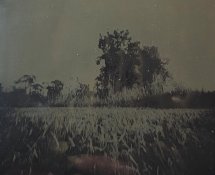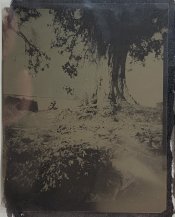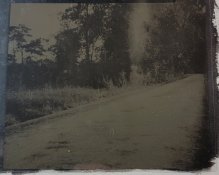A couple potential options for processing sheet film in daylight (after loading the tank, of course) other than taco: Yankee Agitank works well in my experience (I have one), accommodates most sheet film sizes, and holds a lot of film (up to 12 sheets), though it also needs a lot of solution to cover the film, which stands on its long edge inside the tank (mine needs 1.6+ liters to cover 4x5, whether it's one sheet or twelve) and is easy to misload (leading to sheets contacting each other, causing undeveloped areas). There are a number of inserts for Paterson System 4 and Super System 4 that accept one size of sheet film each -- Mod 54 is one brand. They hold, IIRC, 4 sheets in a Paterson that will take 2x120. Jobo made a tank and reel system specifically for sheet film, but it's expensive and unless used with a rotary agitation system of some kind, also needs a lot of liquid. You can also process film in "print drums" -- daylight processing drums originally made/sold for daylight processing color prints after initial handling (under the enlarger) in total darkness. These haven't been made in decades, though, and are likely to leak due to old compressed gaskets; if you have (access to) a 3D printer it may be possible to print replacement seals in Thermoplastic Polyurethane (TPU) filament, and they can be had at pretty reasonable prices (though shipping cuts into the savings).
Trays are a good option once you have a darkroom, especially for ortho films, since you can develop under red safelight and see what you're doing at every stage, but the others above make a bathroom with a decent counter a good alternative, as long as you have a large changing bag.











 .
. 


